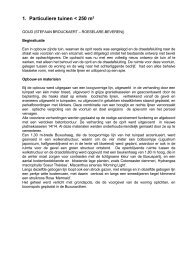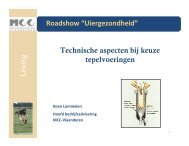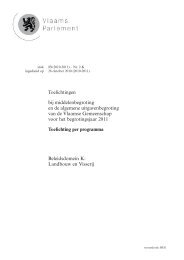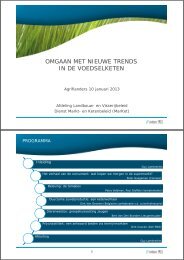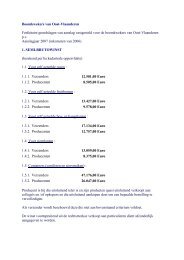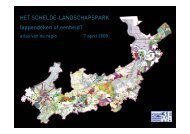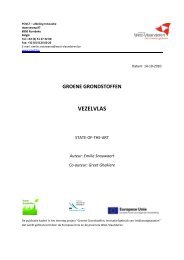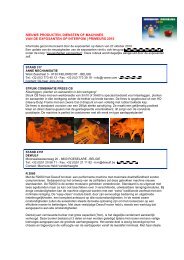Beste Beschikbare Technieken (BBT) bij bodemsaneringen
Beste Beschikbare Technieken (BBT) bij bodemsaneringen
Beste Beschikbare Technieken (BBT) bij bodemsaneringen
Create successful ePaper yourself
Turn your PDF publications into a flip-book with our unique Google optimized e-Paper software.
- Biofilter: - moist air<br />
- pollutant must be biodegradeble (C 10-C 16)<br />
- low concentrations<br />
- not in winter<br />
- needs more maintenance<br />
- not often used (1 out of 80 yards)<br />
- Thermal incineration units: - only when the incineration can be autothermal;<br />
high concentrations<br />
A BAT evaluation is done for 6 important and common groups of ground water<br />
pollutants; VOCl, BTEX, mineral oil, PAC, heavy metals and MTBE.<br />
This BAT evaluation led to the following conclusions:<br />
- Air stripping is BAT for the removal of VOCl and BTEX. Air stripping must be<br />
completed with an air remediation technique. Depending on the situation a posttreatment<br />
with activated carbon may be necessary.<br />
- BAT for the removal of mineral oil is one of the following: activated carbon, air<br />
stripping, biological treatment or oil/water seperator.<br />
- Activated carbon is BAT for the removal of PAH. If only naphthalene has to be<br />
removed also air stripping and biological treatment are BAT.<br />
- For the removal of heavy metals precipitation, completed with ion-exchange for<br />
Cd, is BAT.<br />
- For MTBE removal a combination of an activated carbon filter with strippers is<br />
BAT.<br />
On the basis of these BAT conclusions VITO proposed environmental permit conditions<br />
for thermal treatment plants and for the reduction of air pollution from soil remediation<br />
activities.<br />
For the reduction of air pollution in general, it is suggested that the soil remediation<br />
experts should indicate whether or not the general conditions stated in Vlarem II<br />
appendix 4.4.2 are exceeded.<br />
- If these values are exceeded, the operator needs to fulfill the general conditions<br />
of appendix 4.4.2<br />
- If these values are not exceeded, the 90% rule should be taken into account. This<br />
means that only 10% of the pollutant may be emitted into the atmosphere. This<br />
should be well-monitored during the soil remediation project.<br />
Measurements should be carried out following to the EU standards for the monitoring<br />
of legal emission limit values.<br />
The BAT analyses did not lead to a proposal for new water discharge values for this<br />
activity. When issueing a permit for a specific soil remediation site one has to consider<br />
not only BAT but also the environmental quality standards, risk reduction,<br />
environmental benefits and costs. The BAT associated reduction percentages however<br />
can be used as a basis for acceptable discharge values. Current discharge limit values<br />
(Tabel 5.3) can be seen as an upper level.<br />
IMS/N9129/LIG/03-010/D2 16





